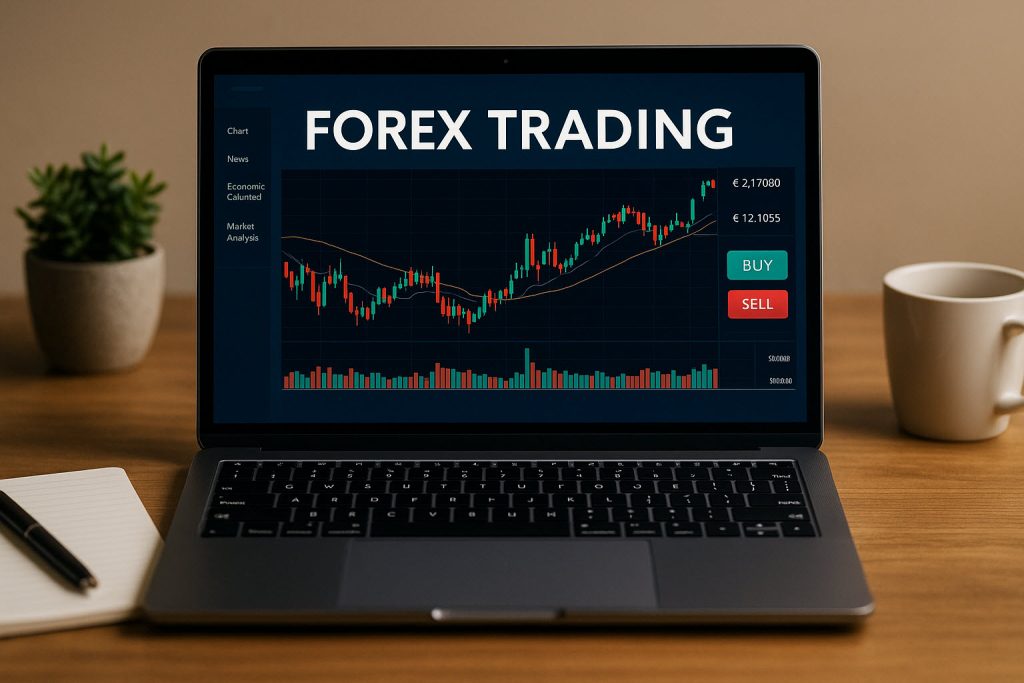Forex, short for foreign exchange, is the largest and most liquid financial market in the world. Every day, trillions of dollars change hands as currencies are bought and sold by banks, institutions, corporations, governments, and individual traders. Unlike traditional stock markets, the forex market runs 24 hours a day, five days a week—moving with global time zones and driven by economic news, central bank policies, political shifts, and raw speculation.
For traders, the appeal is obvious. Low capital requirements, high leverage, and the ability to trade long or short without restrictions make it one of the most accessible markets around. But that accessibility also makes it dangerous. Without a proper understanding of how the market behaves, or the discipline to manage risk, it’s easy to burn through capital faster than expected.

All forex trading is done in pairs. You’re not buying a currency outright—you’re buying one while simultaneously selling another. The most commonly traded pairs are known as the majors: EUR/USD, GBP/USD, USD/JPY, and USD/CHF, among others. These pairs are highly liquid and tend to move in response to macroeconomic events like interest rate announcements, inflation data, and employment reports.
Beyond the majors, there are minor and exotic pairs. Minors include currency combinations without the US dollar, like EUR/GBP or AUD/JPY. Exotics involve emerging market currencies like the Turkish lira or South African rand paired with a major. These tend to offer larger moves, but wider spreads and lower liquidity increase the risk.
Understanding how pairs move—and more importantly, why they move—is core to developing any forex strategy. It’s not just about spotting a pattern on the chart. It’s about knowing what news is likely to impact volatility, how central banks influence price action, and when liquidity dries up across sessions.
Most retail forex traders operate through online platforms provided by brokers. The two dominant platforms in the industry are MetaTrader 4 (MT4) and MetaTrader 5 (MT5). They offer charting, automated trading features, indicators, and one-click execution. But the platform is only one piece of the equation.
Execution speed, pricing model, and broker reliability matter just as much—if not more. Brokers that use a dealing desk may take the opposite side of your trade, introducing conflicts of interest. DMA, ECN, and STP brokers provide access to deeper liquidity and raw spreads but often charge commissions.
The way a broker handles your orders will affect slippage, fill rates, and whether your strategy survives in the long run. Traders working with high-frequency setups, scalping techniques, or large position sizes need stable, fast execution infrastructure. Traders operating longer timeframes care more about overnight swap rates, rollover costs, and the broker’s risk management policies.
To filter reliable options and avoid unnecessary trial and error, many traders start with a comparison tool like the website forex.ke It provides access to broker reviews, trading platform breakdowns, and performance insights that make it easier to choose where—and how—to trade forex effectively.
The leverage offered in forex can be a double-edged sword. While it amplifies profit potential, it does the same for losses. Trading with 1:100 or 1:500 leverage can wipe out an account with a relatively small move against your position. That’s why risk management isn’t an add-on—it’s the foundation.
Most professional traders never risk more than 1–2% of their capital on a single trade. They use stop-losses, take-profit targets, and maintain strict control over their trading size. Discipline matters more than forecasting, and consistency beats trying to catch every big move.
Having a trading strategy isn’t the same as having a working system. Strategy involves when to enter, how to manage the position, and when to exit. But it also involves execution—how your platform fills the order, what slippage occurs, and how the spread affects your breakeven point.
Many strategies that look good on paper fail in real-time due to poor execution conditions. Backtesting helps, but forward-testing on demo accounts, and later with small capital, is where the real work begins.
A solid strategy accounts for multiple timeframes, knows which news events to avoid, and adjusts position size based on volatility. The market doesn’t stay still, and neither should your method.
There’s a common misconception that forex is fast money. The truth is, it’s a grind—one that requires emotional control, market awareness, and technical knowledge. Success in forex isn’t about predicting every move. It’s about managing your capital well enough to survive the losing streaks and compound the winning ones.
Whether you’re just getting started or revisiting your trading setup after a few rough sessions, the forex market rewards patience, not pressure. There’s always another trade. What matters is whether you’re still positioned to take it.
This article was last updated on: September 5, 2025